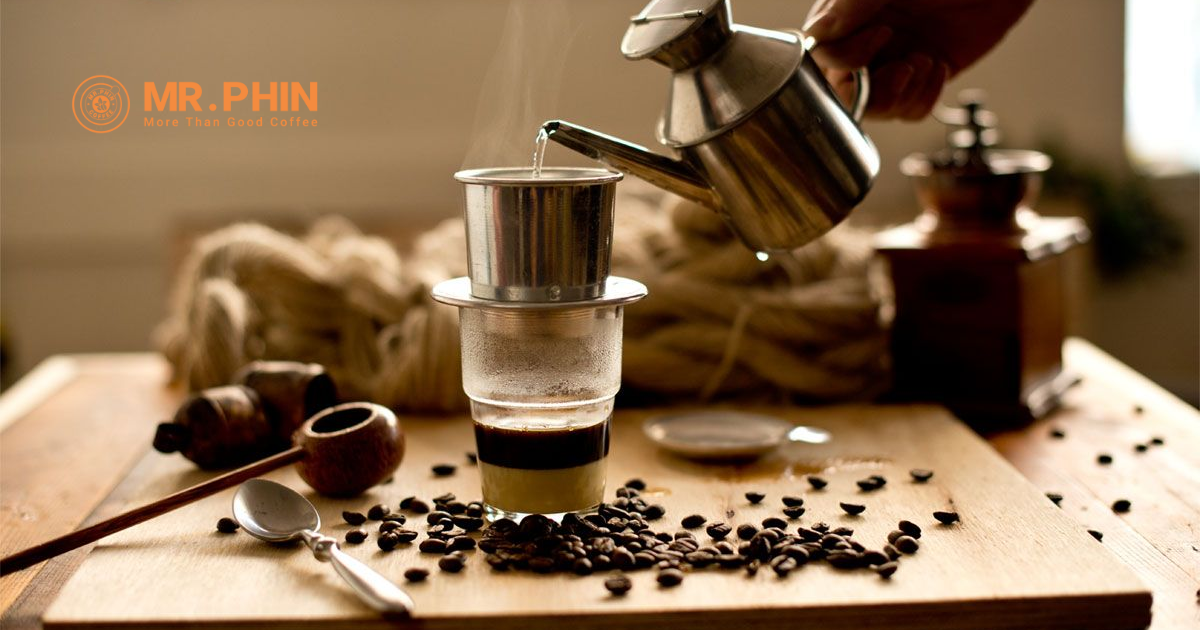4 Common Mistakes When Brewing Vietnamese Drip Coffee
Vietnamese drip coffee isn’t just a drink — it’s a cultural icon of Vietnam. With its slow-brewing method, you can craft a rich, aromatic cup that embodies the essence of traditional Vietnamese coffee. However, brewing the perfect cup isn’t always smooth.
Here are the 4 most common mistakes when brewing Vietnamese drip coffee and how you can avoid them for a flawless, flavorful cup.

1. Burnt or Bitter Coffee
Why It Happens
One of the biggest mistakes with Vietnamese drip coffee is ending up with burnt or overly bitter coffee, ruining its natural richness. Common causes include:
-
Using water that’s too hot (over 100°C/212°F), scorching the grounds.
-
Overpacking the filter with too much coffee, restricting water flow.
-
Tamping the coffee too tightly, preventing proper extraction.
-
Letting the coffee steep for too long (over 5 minutes), causing over-extraction and a harsh, burnt taste.
How to Fix It
-
Use water at the ideal temperature of around 92°C (197°F). Let boiled water cool for 30 seconds before pouring.
-
Steep for 4–5 minutes only to avoid bitterness.
-
Avoid direct flame when heating water; use a kettle or electric boiler for stable heat.
-
Grind coffee to a medium-coarse texture — not too fine, which burns more easily.
2. Cloudy Coffee with Sediment
Why It Happens
Cloudy Vietnamese drip coffee filled with sediment usually results from:
-
Using coffee that’s ground too finely, allowing particles to slip through the filter.
-
Overloading the filter (more than 25g), clogging and disrupting extraction.
-
Pouring water too fast, stirring up the coffee grounds.
-
A damaged or poor-quality phin filter with gaps or holes.
How to Fix It
-
Use medium-ground coffee, ideal for traditional phin brewing.
-
Pour water slowly and evenly in circular motions.
-
Inspect your filter and replace it if damaged.
-
Follow proper ratios: 20–25g coffee for a standard phin.
-
Keep brewing time to 4–5 minutes for a clean, smooth cup.
3. Coffee Doesn’t Drip
Why It Happens
Sometimes, the biggest challenge with Vietnamese drip coffee is when the water doesn’t pass through the grounds. This is often caused by:
-
Coffee ground too fine, forming a compact, water-resistant layer.
-
Using too much coffee for the filter size.
-
Clogged filter holes due to old residue.
-
Pouring water too quickly, compressing the grounds.
-
Water temperature too low, hindering proper flow.
How to Fix It
-
Use the right coffee amount for your phin size (start small, adjust for taste).
-
Tamp gently to avoid over-compression.
-
Grind coffee at a medium consistency, or use pre-ground coffee specifically for phin brewing.
-
Clean your filter thoroughly to prevent blockages.
-
Keep brewing time under 5 minutes for balanced extraction.
4. Coffee Drips Too Quickly
Why It Happens
On the opposite end, sometimes water flows too fast through the phin, producing weak, watery coffee. This usually happens because:
-
The coffee grind is too coarse, leaving too much space between particles.
-
Too little coffee is used, reducing resistance.
-
The filter holes are too large or the phin isn’t properly sealed.
-
Water is too hot, speeding up the flow unnaturally.
How to Fix It
-
Grind coffee to a medium-coarse level, not too chunky.
-
Use the recommended ratio of 25g coffee to 90–100ml water (1:3.6–1:4).
-
Maintain proper water temperature (90–96°C / 194–205°F).
-
Gently swirl the phin as you pour to slow the flow if necessary.
Tips for Brewing the Perfect Vietnamese Drip Coffee
Mastering Vietnamese drip coffee is about precision and patience. For a rich, full-bodied cup, remember:
-
Use fresh, high-quality beans roasted within 2–3 weeks for peak flavor.
-
Grind to the right texture — not too fine, not too coarse.
-
Use clean, filtered water at 90–96°C for balanced extraction.
-
Stick to the golden ratio: 25g coffee per 90–100ml water.
-
Brew for 30–60 seconds of blooming and 4–5 minutes total.
-
Clean your phin after every use to avoid bitterness or blockages.
At Mr. Phin Coffee, we provide premium roasted beans perfect for Vietnamese drip coffee, so you can enjoy authentic, barista-quality coffee at home.
Conclusion
Brewing Vietnamese drip coffee is a delicate art, but avoiding these four common mistakes will elevate your coffee game. With the right beans, grind size, water temperature, and brewing technique, you can enjoy a cup of coffee that captures the bold, aromatic spirit of Vietnam — right in your kitchen.
